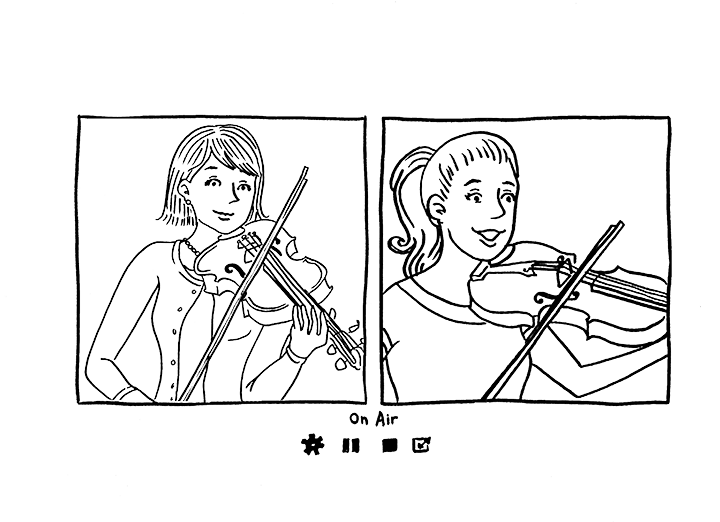Purchasing Your First Violin

Buying your first violin is an exciting, and sometimes daunting task. It’s an important decision since the quality of your violin can directly affect your progress. A good quality violin will be enjoyable to play. On the other hand, a poorly made violin can lead to frustration and slowed progress. Here are some tips to help you make the best choice.
Not All Violins Are Equal
One violin may look the same as another, but the quality of materials and craftmanship make all the difference. There is a saying that great violins play themselves. While there is obviously some skill involved, a well-made violin does makes playing easier.
This isn’t just important for intermediate or advanced players, it’s crucial for beginners. In fact, it’s even more important for beginners! An advanced player will know when they are playing poorly made instruments. The tone may be unclear and fuzzy, string crossings may be sloppy, the bow may be uncontrollable, and the violin may not even stay in tune. A beginner will always blame their playing problems on themselves, and may never realize the substandard violin or bow is the culprit!
Don’t think that you have to spend thousands of dollars to get a violin worth playing. There are many fantastic beginner violins with affordable price tags. The term “beginner violin” generally encompasses a price range from $200-$500, but the quality can vary wildly. Most beginner violins will come as an outfit including a case and a bow. If the violin is substandard, the bow will also be low-quality.
VSOs
Be wary of extremely cheap violins from auction sites or megastores. These violins are termed “violin shaped objects” or VSOs. They may look like a violin, but that’s where the similarities end. These violins are often completely unplayable and the price tag to make them playable is more than what a good quality violin would cost.
Don’t shop for violins at a store or website that doesn’t specialize in stringed instruments or musical instruments. The violins are more than likely VSOs. Don’t be tempted to purchase a cheap violin just to see if you like it. You won’t. Don’t waste valuable practice time and momentum on a worthless violin. If you are stuck with one of these VSOs, you may find you dislike playing and you won’t even know why exactly. More than likely, you’ll think the problem is with yourself and give up all together.
Violins have no frets or keys. Correct finger placement is the only way to play the correct notes. This is why it is so important to tune your violin every time before you play. You want the strings to always be the right pitch so your fingers know where to go!
VSOs are often impossible to keep in tune. Violins that are difficult to tune are troublesome for everyone, but they are especially frustrating for children. Good quality violins will have fine tuners and pegs that properly fit their holes. An upgrade that I strongly recommend is perfection or planetary pegs (I use them myself). They are geared pegs that make tuning a cinch. Try to purchase a violin with these pegs already installed or have a luthier install them for you.
The Difference Between VSOs and Real Violins
VSOs are often made with plastic parts or green wood that cracks and warps as it dries. The fingerboard is not real ebony—it’s inferior wood that has been painted black. Sometimes, the pegs are plastic so they will never stay in tune. Or they are made of cheap wood that can easily snap in two while you are trying to tune. Not only are the materials inferior, VSOs often go straight from the factory to your door without getting the correct setup.
There are many delicate parts that must be adjusted by a professional in order to make a violin playable. This is often called a proper “setup.” The bridge that holds up the strings should be the correct height and shape—if it’s not you may always hit other strings no matter how you bow. The pegs should correctly fit inside the peg holes, otherwise you will never be able to keep the violin in tune. The strings should be evenly spaced. The soundpost should be correctly adjusted. The bow should be straight and have real horsehair.
Where to Buy Good Quality Violins
There are lots of VSOs out there, but there are also some great companies with wonderful products. When buying a violin from a reputable music store that specializes in stringed instruments, your violin should come to you properly set-up and ready to play.
Before you buy, call the company and ask these questions:
-
What are the company’s policies? Do they have trade-in policies that allow you to exchange your instrument for a better or bigger one when the time comes? Reputable string companies should have this policy. This lets you know they think their violins are worth buying back from you.
-
Do the violins come ready to play? Do they come straight from the factory or are they adjusted on site?
Ask yourself these questions:
-
Are the representatives helpful and knowledgeable?
-
Do they have suggestions on what size instrument to purchase? Can they explain where and how their violins are made?
- Do they have a background in stringed instruments? If not, can they connect you to someone who does?
If the answer is “no” to any of these questions, choose another company.

Lessonface violin teachers are here to help!
If purchasing a violin seems daunting, it doesn’t have to be. You have a wealth of resources right at your fingertips---Lessonface teachers! Send us an email or better yet, schedule a free trial lesson. It’s a great time to discuss buying your first violin.
Related:
Learn more with Lora Gallman: Book a trial violin lesson online
Violin Classes and Tutorials
Ms. Gallman is a wonderful teacher. She has the most pleasant personality, and is a joy to have as a teacher.
Original photo and art © Lessonface 2019




